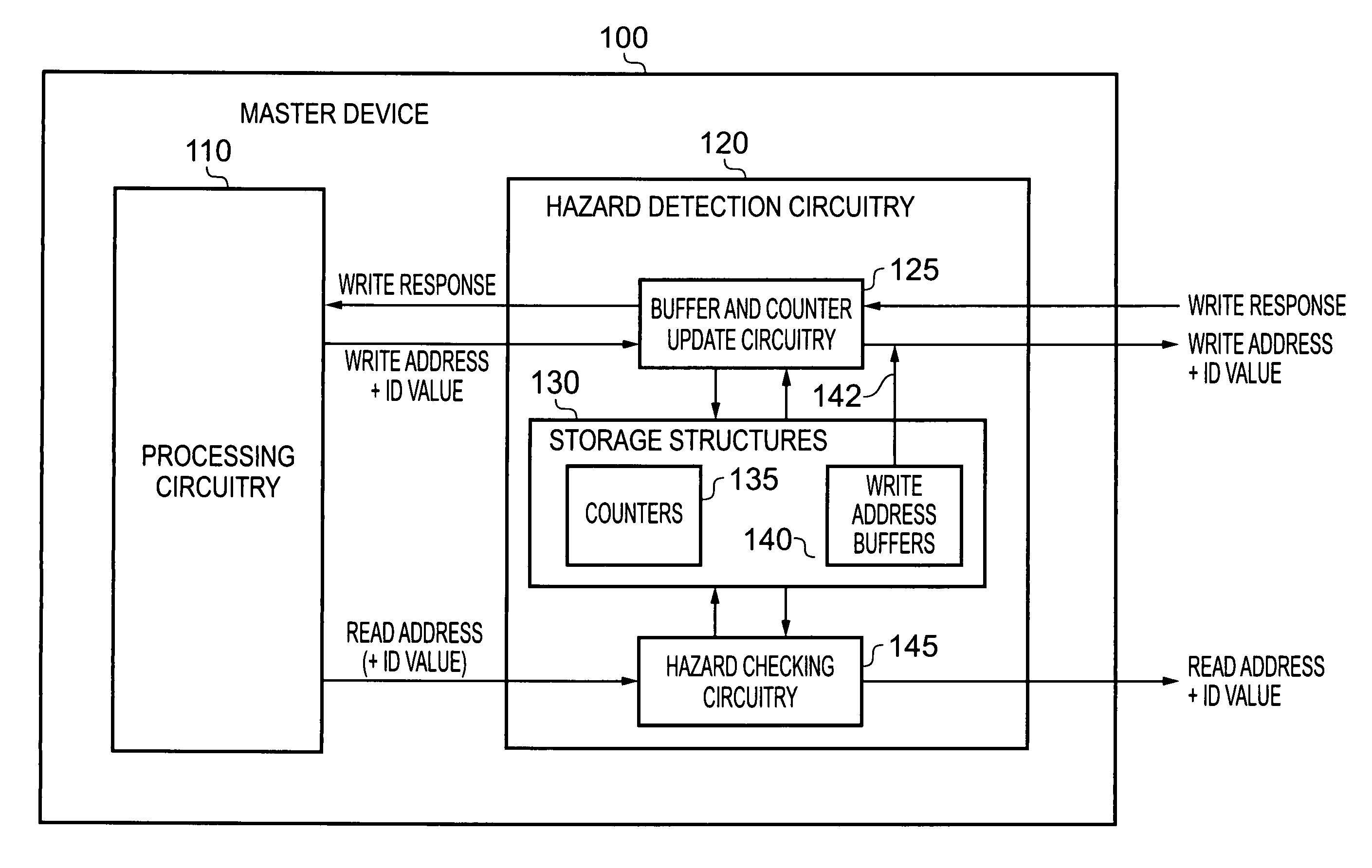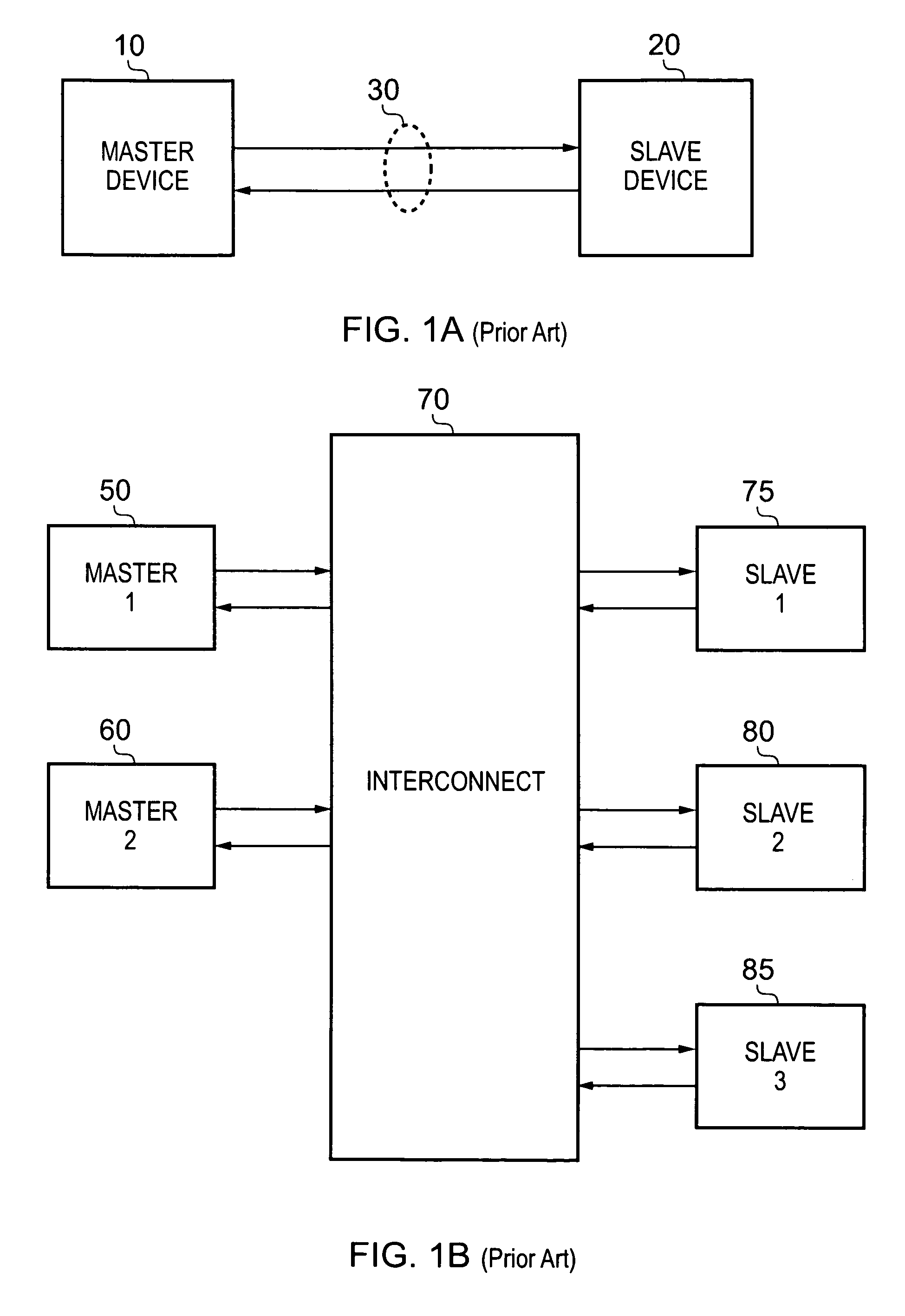Data processing apparatus and method for performing hazard detection
a data processing apparatus and data processing technology, applied in the direction of electric digital data processing, data conversion, instruments, etc., can solve the problems of difficult to predict the possibility of one or more hazard conditions, difficult to determine how many write access requests the master device must be capable of hazard checking, and difficult to predict the latter. , to avoid the effect of avoiding the possibility of a waw hazard
- Summary
- Abstract
- Description
- Claims
- Application Information
AI Technical Summary
Benefits of technology
Problems solved by technology
Method used
Image
Examples
Embodiment Construction
[0048]FIG. 2 is a block diagram illustrating the components provided within a master device 100 in accordance with one embodiment of the present invention. The master device will be coupled to one more slave devices using a known technique, and accordingly may be coupled via a direct connection as discussed earlier with reference to FIG. 1A, or via an interconnect structure such as discussed earlier with reference to FIG. 1B. The master device 100 includes processing circuitry 110 which may issue a series of access requests, including both write access requests and read access requests, for handling by various slave devices. Typically the slave device to which any particular access request is directed is determined from an address specified in the access request. For a write access request, that address takes the form of a write address specifying a location at which a write operation is to be performed by the slave device, and similarly for a read access request, the address will t...
PUM
 Login to View More
Login to View More Abstract
Description
Claims
Application Information
 Login to View More
Login to View More - R&D
- Intellectual Property
- Life Sciences
- Materials
- Tech Scout
- Unparalleled Data Quality
- Higher Quality Content
- 60% Fewer Hallucinations
Browse by: Latest US Patents, China's latest patents, Technical Efficacy Thesaurus, Application Domain, Technology Topic, Popular Technical Reports.
© 2025 PatSnap. All rights reserved.Legal|Privacy policy|Modern Slavery Act Transparency Statement|Sitemap|About US| Contact US: help@patsnap.com



